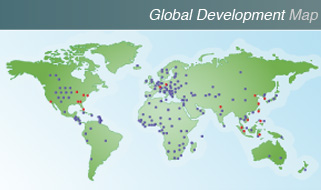-
"The only way to get rid of temptation is to yield to it...I can resist everything but temptation."
Oscar Wilde
Posted October 12, 2012
For those of you, who like me are perhaps too quick to agree with Mr. Wilde, there is good news this week reported by the New England Journal of Medicine. In a "note" (as opposed to a peer reviewed article, I must admit) a researcher has studied the correlation between a nation's per capita chocolate consumption and the number of Nobel Science Prizes awarded to its citizens. Using data from 23 major chocolate suppliers, he finds a "surprisingly high" correlation.
There has been evidence that flavonoids in things like green tea, red wine and dark chocolate can possibly slow down age related mental decline; there have even been some (failed) clinical trials using synthesized or distilled versions of these "neutriceuticals." I bring this up not simply because I have been looking for some redeeming rationale for my heretofore unhealthy dietary regimen. This tongue in cheek (but real) analysis reminds us how little statistics may avail us when looking at early stage clinical data; like that presented by our Principal Investigator Dr. Eva Feldman at the recent ANA meeting in Boston.
When considering our ALS data, with many patients now over 500 days out from their treatment, a relevant question is, "What does it really mean?" If there were no signs of a treatment effect it would mean one thing, but there is. One cohort of patients (who received the highest dose) have all either improved or basically maintained their status over a significant period of time. As it stands now, it's pretty clear that "something" substantial is happening with the patients that have shown the best results. We are anxious to move to the next trial where we will dramatically increase the dosage and focus on the cervical region of the spinal cord, where the muscles that control breathing are connected to the CNS. This is where we believe we can most profoundly help ALS patients.
The obvious follow up questions are, "What differentiates the responders from the non-responders?" and "What makes the 'star' cohort different?" From a scientific point of view, the answer is that the sample is too small and the variability in the disease from patient to patient too large to draw a conclusion. As frustrating as that is, it is the truth. We have theories of course, and they will inform the design and execution of the next trial; but we do not "know" the answer (yet).
Dr. Messerli saw the strong correlation between chocolate consumption and Nobel Prizes. The Swiss consume the most chocolate and have won the most Nobels. However the Swedes have produced (roughly) twice as many Nobels as their chocoholism should have produced. Are they perhaps more sensitive to chocolate and therefore require less? Is there something else in their diet that enhances the cognitive powers of chocolate? Are the Nobel judges merely biased towards the home team? You can see how fruitless (no pun intended) such an analysis is.
What we seem to be seeing with the transplantation of our cells is that more is better, and earlier/closer to diagnosis is better. But we also see exceptions to both of those rules. What is clear to us, is that we are seeing signs of a treatment effect in some patients which seems to last. We need to move forward into a multi-site phase two trial where we increase the dosing up to the maximum safe therapeutic dose and see the potential treatment effect of that full dose.
So when looking at our data, one needs to avoid the temptation to parse this (too small a sample) data to death and simply apply common sense. Something encouraging is happening, we need to press on and increase the effect.






